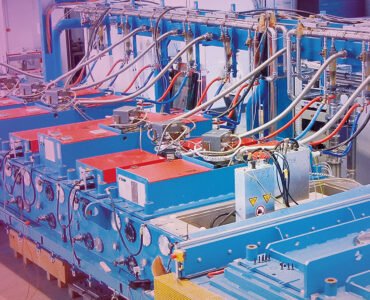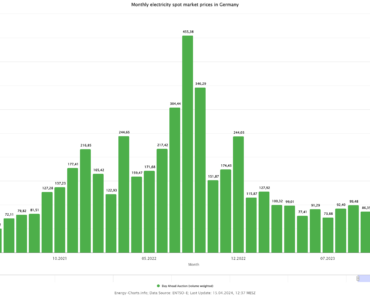The claim that PV modules require more energy for their production than they can ever generate has been disproved by science a while ago. With energy payback times (EPBT) of a few months or years depending on technology, production, installation, and site conditions, PV modules show a positive energy balance after a very short time. At Fraunhofer ISE we look at many indicators when assessing the sustainability of PV modules. In addition to the EPBT, we also consider the greenhouse gas emissions and resource consumption of modules over their entire life cycle.
Compared to other forms of energy generation, PV modules produce virtually no emissions during their utilization phase. Yet, when taking a closer look, we observe impacts that effect their sustainability, for example, material changes, degradation effects as well as site-specific factors such as land use. A particularly interesting topic is the disposal of modules at end of life. Currently this is an important issue, since the first generations of installed PV systems are currently reaching the end of their useful life. What improvements can be made to PV modules with respect to these sustainability criteria?
Sustainability of PV Modules
Energy production from renewable energy technologies is the key means of reducing greenhouse gas emissions, and the carbon footprint of photovoltaic module production is steadily decreasing. Despite this, renewable energy technologies rely on energy-intensive or rare materials such as silicon, silver or copper, whose mining and processing leave an environmental and social footprint mostly in regions outside the European Union.
European policy is currently addressing this problem by introducing ecological verification obligations for manufacturers under the planned Eco-Design Directive and the Energy Label for PV modules. In addition to emissions from production, other topics such as degradation and design-for-repair are also being discussed.

The Utilization Phase
PV modules are designed to produce electricity for as long as possible. Currently, the module lifetime specified by most manufacturers is 25-30 years. Over this period, the module efficiency continuously decreases due to various environmental influences such as corrosion, the ingress of moisture or heat exposure. These degradation effects impact the sustainability not only by reducing the energy balance but also due to alterations in the material properties. After being exposed to the elements for many years, the material properties of plastics and metals can change. These changes can have an impact on their recyclability at the end of life. Different design options, such as the use of frameless glass-glass modules, or the replacement of metals, such as silver and lead, can have a decisive influence on the sustainability over the entire life cycle.
Incorrect handling can result in glass breakage or breakage of the laminate (consisting of a PV cell and its encapsulation), for example. Breakage can make it difficult or even impossible to separate the modules by type at the end of their life. Modules designed for longevity sometime conflict with module designed for sustainability (design-for-repair or design-for-recycling). The more durable a product design, the more stable the material composite. More stable designs can make it more difficult to recover individual materials. EcoDesign methods can be used to resolve these conflicting goals as sustainably as possible.
PV Recycling
The return and disposal of PV modules at end of life is regulated in the EU by the WEEE (Waste of Electrical and Electronic Equipment) Directive. Today PV recycling usually takes place in metal and glass recycling plants, where aluminum, glass and copper are recovered. Specialized recycling, which allows for the recovery of metals such as silver and lead as well as the for the recovery of silicon wafers, is currently not economical due to low return volumes.
Despite a mandatory recycling rate of 80%, the majority of these materials are lost. However, much is happening in research and industry right now. Efforts are being made to be able to recycle the growing volumes of waste in the best possible way and thus further reduce resource and energy consumption over the entire life cycle of a module.
Sustainability Assessment over the Entire Life Cycle
If one wants to evaluate the sustainability of a product in order to optimize it, then all phases within the product’s life cycle should be considered singularly and interactively using a holistic approach. Aspirations aim at a circular economy in which PV modules are repaired, reused and recycled.
Further reading
Herceg, S.; Pinto Bautista, S.; Weiß, K.-A. Influence of Waste Management on the Environmental Footprint of Electricity Produced by Photovoltaic Systems. Energies 2020, 13, 2146. https://doi.org/10.3390/en13092146














Add comment